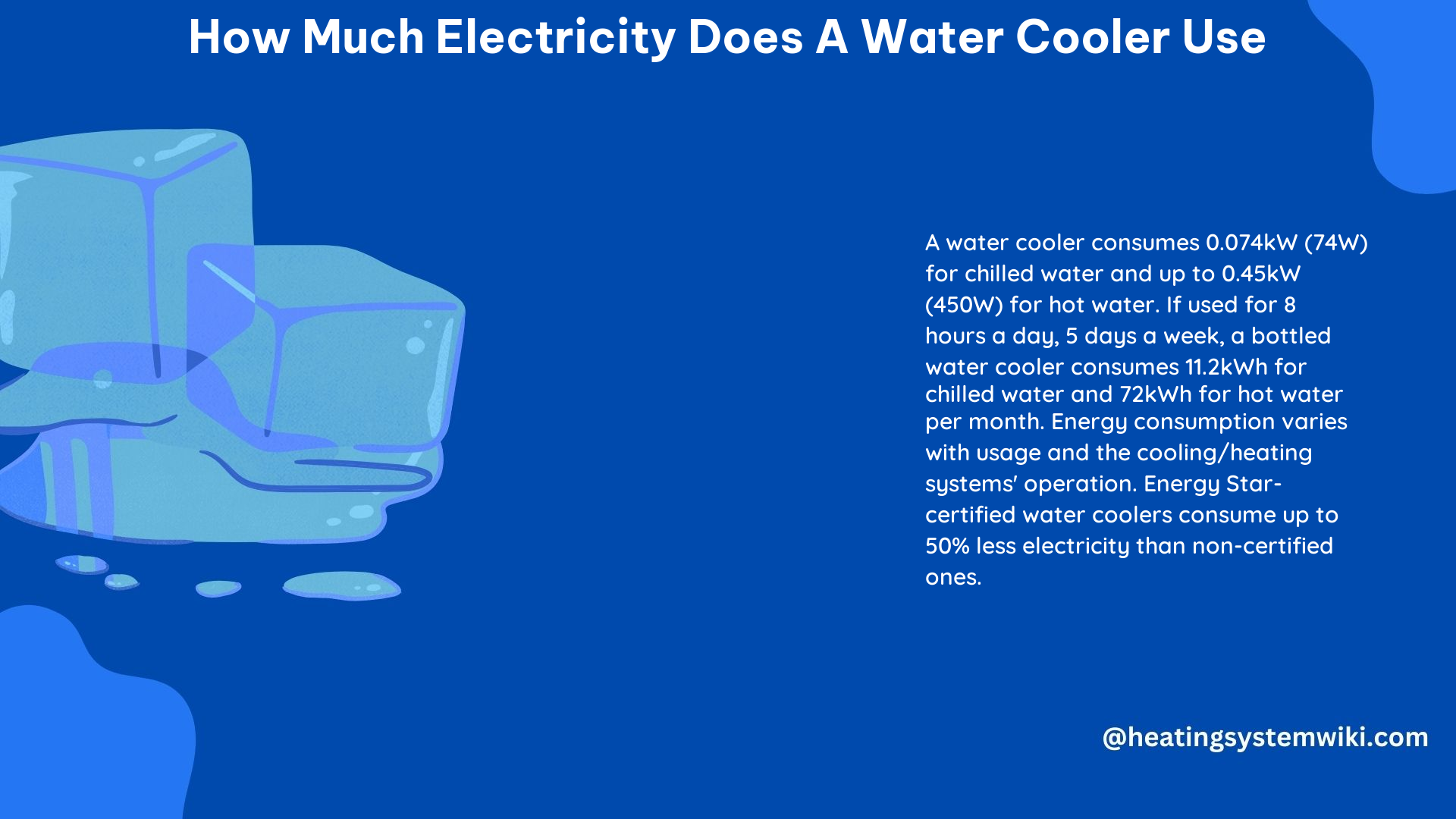A water cooler, also known as a water dispenser, typically uses between 0.25 and 0.45 kilowatt-hours (kWh) of electricity per day, depending on the model and usage. However, the actual electricity consumption can vary significantly based on various factors, and it’s essential to understand the technical details to make an informed decision when purchasing a water cooler.
Understanding Water Cooler Electricity Consumption
The electricity consumption of a water cooler is primarily influenced by the following factors:
-
Cooling Mechanism: Water coolers can use either a compressor-based cooling system or a thermoelectric cooling system. Compressor-based coolers generally consume more electricity than thermoelectric models.
-
Temperature Settings: Water coolers that offer both hot and cold water options tend to consume more electricity than those that only provide cold water. The energy required to heat the water can significantly increase the overall power usage.
-
Capacity and Size: Larger water coolers with higher storage capacities typically consume more electricity than smaller models, as they require more power to maintain the desired water temperature.
-
Usage Patterns: The frequency and duration of use can impact the electricity consumption. Water coolers that are used more often or left on for extended periods will consume more power than those used intermittently or turned off when not in use.
-
Energy Efficiency: Water coolers with higher energy efficiency ratings, such as the 5-tick energy rating, consume less electricity compared to less efficient models.
Typical Electricity Consumption Figures

To provide a more detailed understanding of water cooler electricity consumption, let’s look at some specific examples:
-
Basic Cold Water Cooler: A water cooler with a 120V outlet and a compressor-based cooling system can consume around 0.25 kWh of electricity per day, or approximately 3 watts when running for 8 hours.
-
Hot and Cold Water Cooler: A water cooler that provides both hot and cold water options can use up to 1.2 kWh of electricity per day, which amounts to around $118 per year in electricity costs.
-
Energy-Efficient Cooler: A water cooler with a 5-tick energy rating can consume as little as 0.15 kWh per day, significantly reducing the electricity usage and associated costs.
-
Direct Piping Cooler: Water dispensers that use direct piping and don’t rely on electricity-powered cooling systems can be even more energy-efficient, as they don’t require any electricity to operate.
Maximizing Energy Efficiency
To minimize the electricity consumption of your water cooler, consider the following tips:
-
Choose an Energy-Efficient Model: Look for water coolers with high energy efficiency ratings, such as the 5-tick energy rating, which can significantly reduce your electricity costs.
-
Adjust Temperature Settings: If your water cooler offers both hot and cold water options, consider adjusting the temperature settings to the minimum required, as heating water can be a significant energy drain.
-
Unplug When Not in Use: Turn off or unplug your water cooler when it’s not in use, such as during extended periods of inactivity or overnight, to conserve energy.
-
Consider Direct Piping Coolers: Opt for water dispensers that use direct piping and don’t require electricity-powered cooling systems, as they can be the most energy-efficient option.
-
Monitor Usage and Adjust Accordingly: Keep track of your water cooler’s electricity consumption and adjust your usage patterns or settings accordingly to optimize energy efficiency.
By understanding the technical details and factors that influence water cooler electricity consumption, you can make an informed decision when purchasing a new unit and implement strategies to minimize your energy usage and associated costs.
